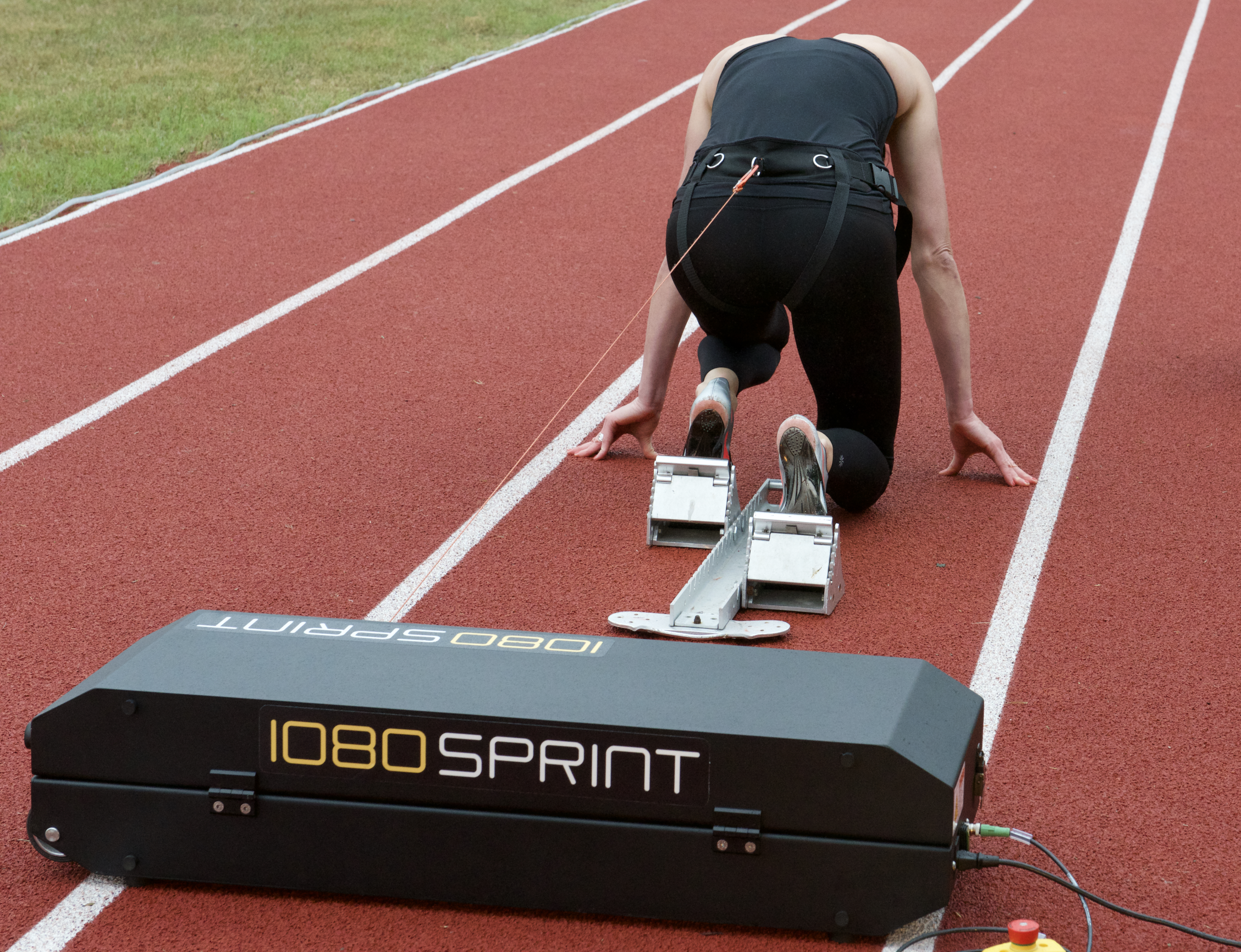Dr. Gerald Mangine recently co-authored the first study examining the effect of resisted sprinting on the kinetics of a subsequent sprint. His work with the 1080 Sprint raises the possibility of resisted and assisted sprinting as highly-specific means of post-activation potentiation.
Only three studies had previously examined resisted sprinting as a means of inducing post-activation potentiation (PAP). Several factors limited the precision and applicability of these studies. Two of the studies used a sled-pull over ground. The third used manual resistance during ice skating. The resistance in the latter study, therefore, was neither constant nor quantifiable. Given equipment limitations in all three, sprint time (i.e., speed) was the only output variable the researchers could examine.
Using the 1080 Sprint, Dr. Mangine and his colleagues were the first to compare the kinetics of resisted sprinting with a subsequent unloaded trial. This provided insight into the effect that a resisted sprint has on unloaded sprinting.
“The 1080 is valuable in picking apart the sprint. Monitoring speed alone does not give any indication of kinetics. Given the rarity of players in contact sports attaining top speed, we want to know how much force they put into the ground with each step, differences between the right and left legs, force-velocity values and how they progress over the course of the sprint.”
RELATED: 1080 Sprint in adapted athletics: Strength and conditioning research at University of Alabama
The results showed a significant difference only in the rate of force development in the final five meters of the post-activation unloaded sprint. Mangine’s team attributes this to their protocol using only a single resisted sprint to potentiate well-trained Division I athletes. Standard PAP protocols require several near-maximal sets to produce an effect in experienced athletes. Future studies will examine the effect of increased loading, the number of sprints and rest intervals.
Dr. Mangine’s keenest question, though, is whether assisted sprinting could be the ideal way of inducing PAP, particularly for sprinters, hurdlers and jumpers. The notion is as simple as it is game-changing: move to the previously-unavailable side of the force-velocity curve.
“Post-activation potentiation requires a maximal stimulus. Could velocity be that maximal stimulus instead of force?” Mangine asks.
Resisted or assisted sprinting is more sport-specific than back squats or any other high-force means of inducing PAP for track & field athletes. Assisted sprinting could be doubly effective as a pre-meet warm-up. Overspeed sprinting could improve the athlete’s power output and kinetics via the velocity component of the F-v curve. At the same time it would also cue the athlete to the cadence that they build towards over the course of a sprint or an approach to a jump.
If assisted sprinting effectively improves an athlete’s kinetics via PAP, the follow-on question is whether incorporating both resisted and assisted sprinting into the warm-up has an even greater effect. The 1080 Sprint could enable the athlete to tap both sides of the force-velocity curve, in ways that are specific, safe, convenient and easily monitored.
[av_button_big label=’Next: Arno Galmarini builds character and culture – then talent – at Elite Training’ description_pos=’below’ link=’manually,http://1080motion.com/arno-galmarini-1080-quantum/’ link_target=” icon_select=’no’ icon=’ue800′ font=’entypo-fontello’ custom_font=’#ffffff’ color=’theme-color’ custom_bg=’#444444′ color_hover=’theme-color-subtle’ custom_bg_hover=’#444444′ av_uid=’av-2tqwqv’][/av_button_big]
Dr. Mangine’s current projects with the 1080 Sprint include a nutritional supplement study with rugby players, and biomechanical and kinetic analysis of an Olympic hurdler. Alongside post-activation potentiation he is particularly interested in the effect of resistance on reducing the asymmetries in an athlete’s kinetics and mechanics over the course of a sprint.






























































